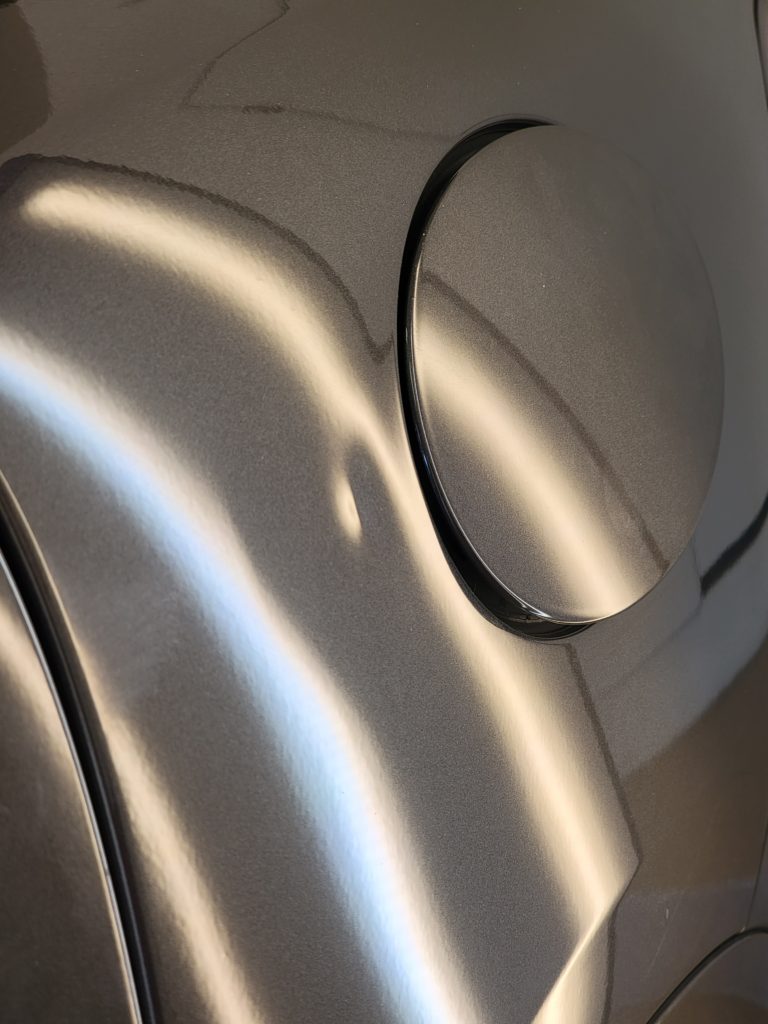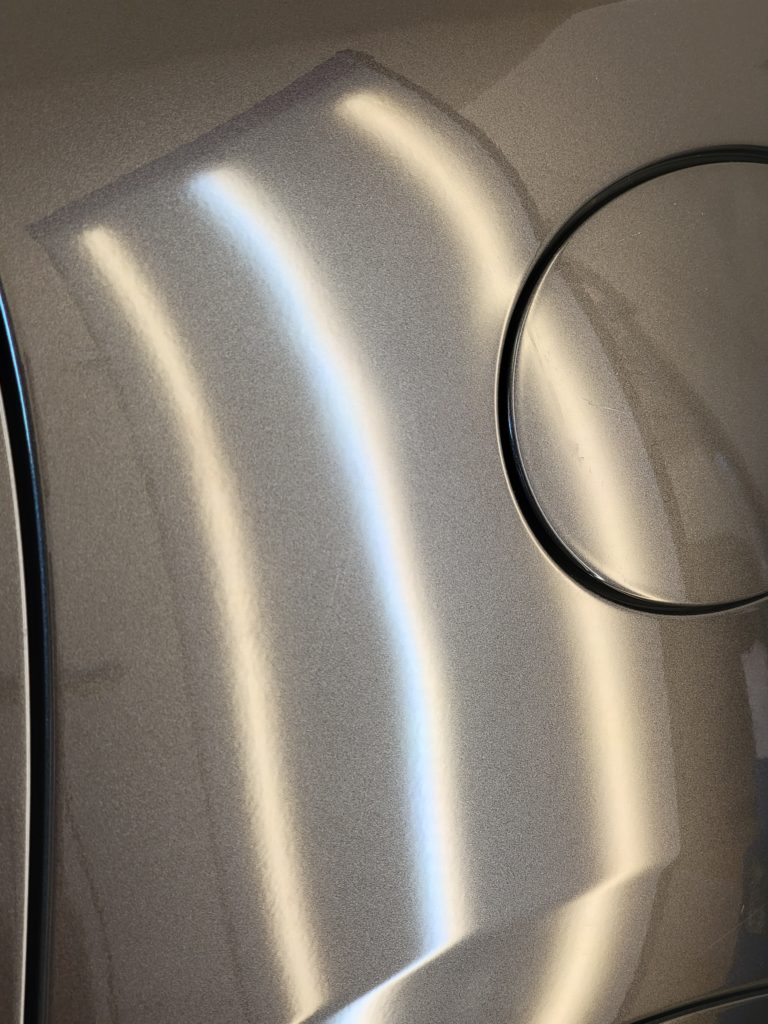

How to choose a Paintless Dent Repair Company?
Dent Repair or widely known as (PDR) is an effective method of repairing minor dents, dings, and creases in a vehicle’s body without using traditional body repair methods that involve painting or replacing parts. PDR is a more cost-effective and time-efficient alternative to traditional body repair methods. It massages the damaged area from behind with specialized tools to reshape the metal and remove the dent.
Benefits of Paintless Dent Repair:
PDR has several benefits over traditional dent repair methods. One of the primary benefits is cost-effectiveness. PDR typically costs much less than conventional dent repair because it doesn’t require replacing parts or repainting the damaged area. PDR is usually faster than traditional dent repair to get your car back to normal.
Another benefit of PDR is that it doesn’t damage the vehicle’s paint. Traditional dent repair methods can cause damage to the paint, which can lead to paint chipping, fading, or peeling over time. The original factory paint remains intact with PDR, so your car retains its original appearance and value. Your vehicles OEM factory paint and clear coat is the highest quality possible, you DONT want to lose that!
What kind of damage can be fixed with PDR?
PDR is suitable for fixing minor dents, dings, and creases in a vehicle’s body, such as those caused by hail, small rocks, shopping carts, and minor collisions. However, the damage’s severity and the dent’s location will determine whether PDR is viable. PDR is typically most effective on shallow dents and dents in flat or slightly curved areas of the vehicle, such as the hood, trunk, or doors, but repairs are absolutely not limited to these areas.
How PDR works:
PDR uses specialized tools to apply pressure to the backside of the dent. The technician carefully massages the damaged area, pushing and pulling the metal until it returns to its original shape. The technician can access the back of the dent through small access points, such as through the window or by removing inner panels.
Tools used in PDR:
The tools used in PDR are specialized and designed to access and manipulate the backside of the dent. These tools include metal rods, picks, hammers, and more advanced tools such as glue guns, LED light boards, suction cups, and reflector boards. Some technicians also use special lights or reflectors to help them see the dent and work on it more effectively.
Techniques used in Paintless Dent Repair:
PDR technicians use various techniques to repair dents, depending on the spot and severity of the damage. These techniques include using metal rods to massage the dent and using glue to pull the dent out, sometimes even using suction cups to pull the dent back into place (be aware that usually suction cups only remove 60-70% of the dent). At Patriot Dent Repair we carefully analyze the damage to determine the best technique for repairing the dent.
Factors that determine the success of Paintless Dent Repair:
The success of PDR depends on several factors, including the size, depth, and location of the dent, as well as the type of metal and the age of the vehicle. PDR is typically most effective on shallow dents, and repairing more severe damage may not be possible. The type of metal also affects the success of PDR, as some metals are more flexible than others. Aluminum and Hight Strength Steel are very difficult to repair. The age of the vehicle can also affect the success of PDR, as older vehicles may have less flexible metal and are more prone to cracking or breaking during the repair process. Additionally, the skill and experience of the PDR technician are crucial factors in the success of the repair.
The PDR process typically involves the following steps:
-
- Initial damage assessment: The technician will carefully inspect the damage to determine whether PDR is viable. They will evaluate the dent’s size, depth, and location to determine the best action.
-
- Preparation of the work area: The technician will prepare the work area by cleaning the damaged area and ensuring sufficient access to the backside of the dent.
-
- Accessing the dent: The technician will access the backside of the dent through small access points, such as through the window or by removing inner panels. This allows them to apply pressure to the backside of the dent and reshape the metal. Sometimes manufactured access is necessary as well, has zero effect on the overall condition of the vehicle.
-
- Applying pressure to remove the dent: Using specialized tools, the technician will massage the damaged area, pushing and pulling the metal until it returns to its original shape.
-
- Finishing touches and inspection: Once the dent has been removed, the technician will inspect the area to ensure the repair is complete. They may also perform any necessary finishing touches, such as sanding or buffing the area to restore its original appearance.
PDR vs traditional dent repair methods:
Cost Comparison: PDR is typically less expensive than traditional dent repair methods, as it doesn’t require replacing parts or repainting the damaged area. Conventional dent repair methods can be much more costly, often replacing parts and repainting the damaged area.
Time comparison: PDR is usually faster than traditional dent repair methods, as it doesn’t require replacing parts or repainting the damaged area. Conventional dent repair methods can take much longer, as they involve replacing parts and repainting the damaged area, which can take several days.
Quality comparison: The quality of PDR is usually just as good as traditional dent repair methods as long as the damage is not too severe. PDR does not damage the vehicle’s paint and can often be used to restore the vehicle to its original appearance. Traditional dent repair methods can also provide high-quality repairs but can be more expensive and time-consuming. The choice between PDR and traditional dent repair methods ultimately depends on the severity and location of the damage, as well as the cost and time considerations.
Choosing the right PDR technician is critical to ensure the repair is completed correctly and your vehicle looks as good as new. Here are some essential factors to consider when selecting a PDR technician:
-
- Experience: Look for a technician with years of experience in the PDR field. Experienced technicians can handle a wide range of dents and ensure that the repair is done correctly.
-
- Training and certification: Check whether the technician has received training and certification in PDR. This shows they have undergone training to handle different dents and repairs.
-
- Tools and equipment: Ensure the technician can access the latest tools and equipment required for PDR. High-quality tools and equipment will ensure the repair is done accurately and efficiently.
-
- Reputation: Check the technician’s reputation online by reading reviews and testimonials from past clients. This will give you an idea of their quality of work and customer service.
-
- Warranty: Choose a technician who offers a warranty for their work. This will ensure you are covered if the repair does not meet your expectations.
Questions to ask before hiring a PDR technician:
Before hiring a PDR technician, ask them the following questions:
-
- How long have you been in the PDR business?
-
- What types of dents can you fix with PDR?
-
- What is your process for repairing dents?
-
- What kind of warranty do you offer for your work?
-
- How long does it take to restore my vehicle?
Cautions when choosing a PDR technician:
Here are some points to watch while selecting a PDR technician:
-
- Lack of experience or training in PDR.
-
- Limited tools and equipment are required for PDR.
-
- Lack of reviews or testimonials from past clients.
-
- No warranty or guarantee for their work.
-
- Unprofessional behaviour or lack of customer service.
In conclusion, Paintless Dent Repair is a reliable, cost-effective, and non-invasive method for repairing minor dents on your vehicle. A skilled PDR technician can remove the dents without damaging the original paint using specialized tools and techniques. It is crucial to choose a qualified technician with experience, training, and the right tools and equipment to ensure your vehicle is restored to its original condition. If you need a quick & affordable solution for minor dents on your vehicle, PDR may be the right choice.

